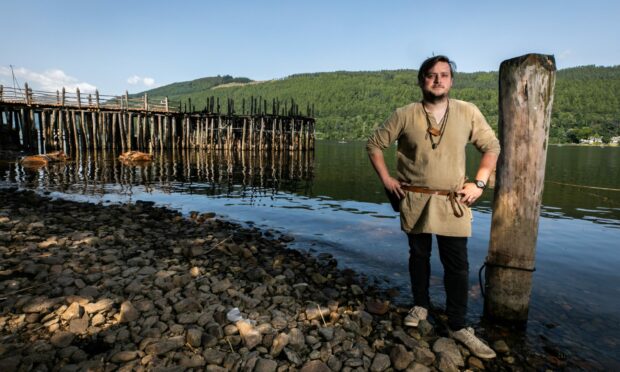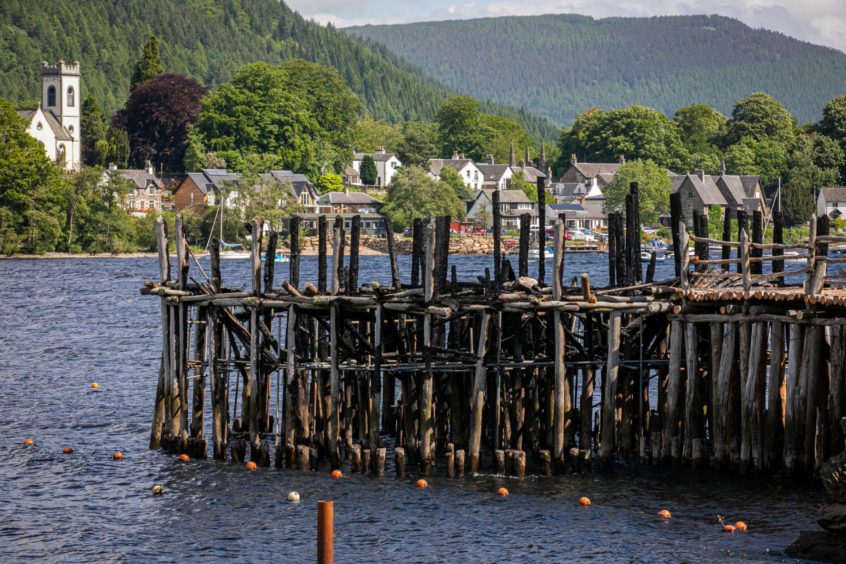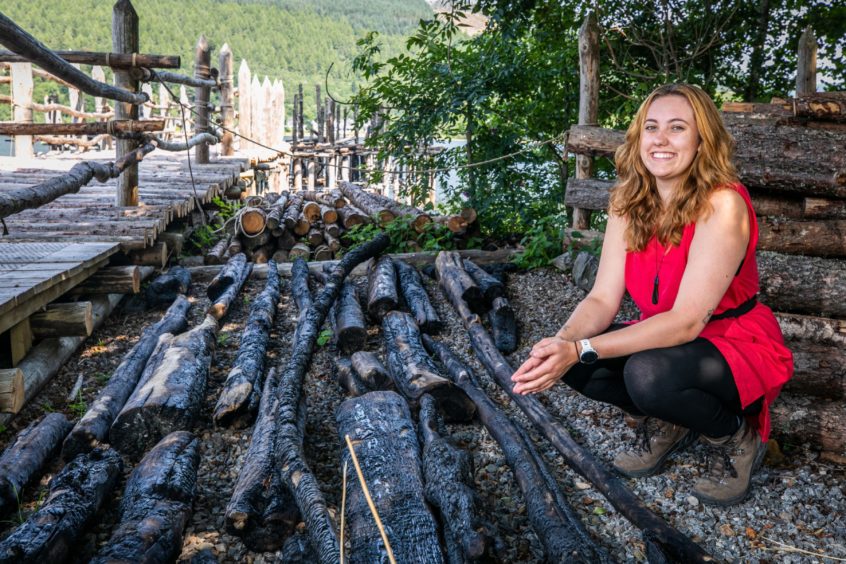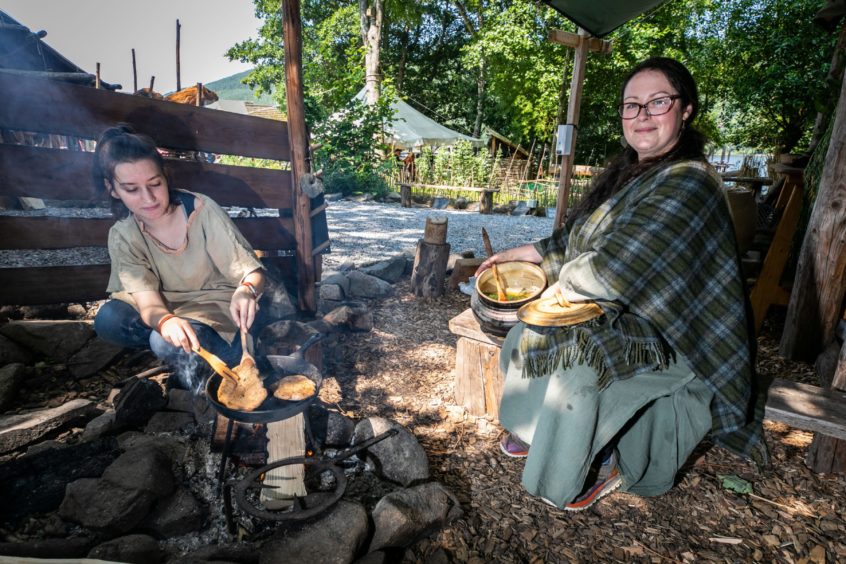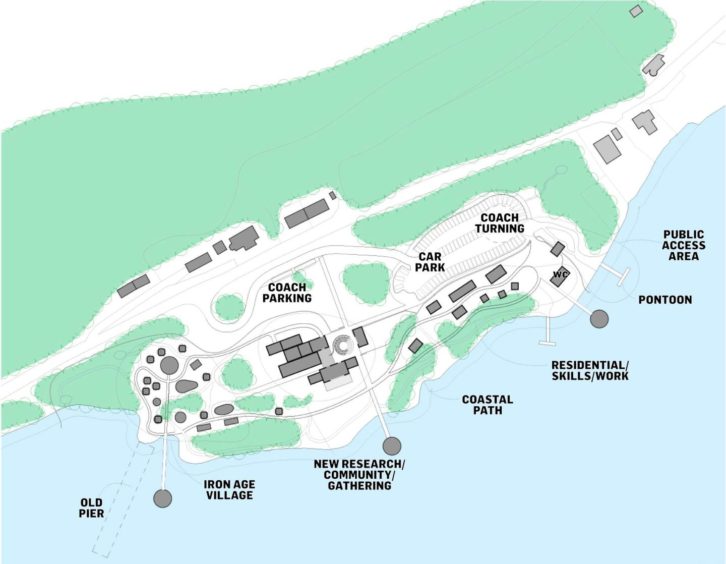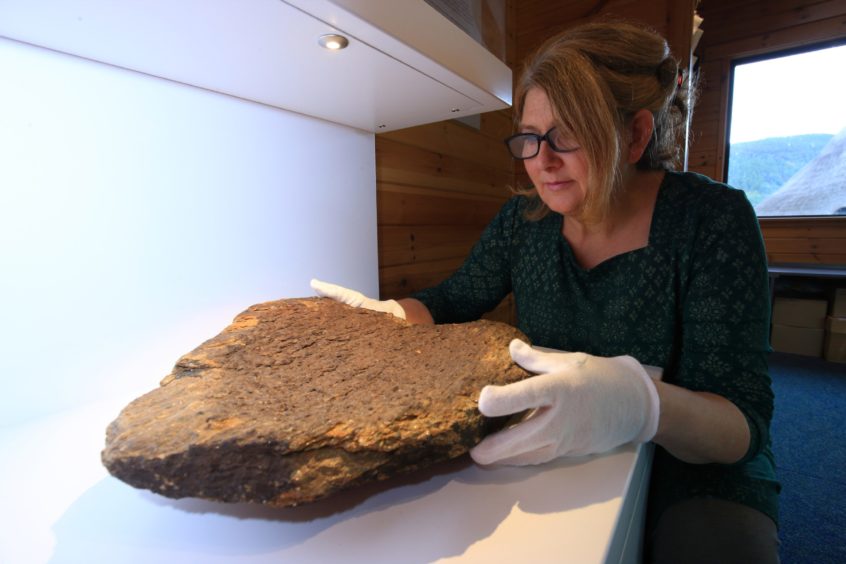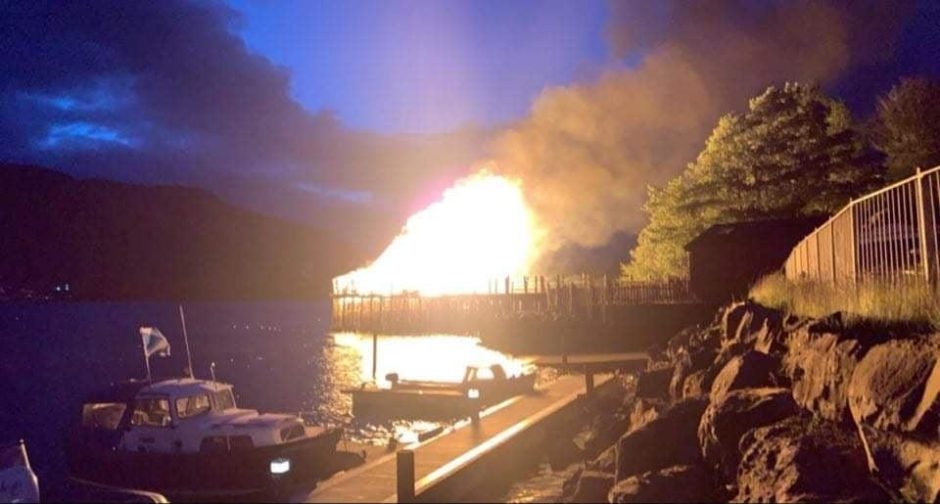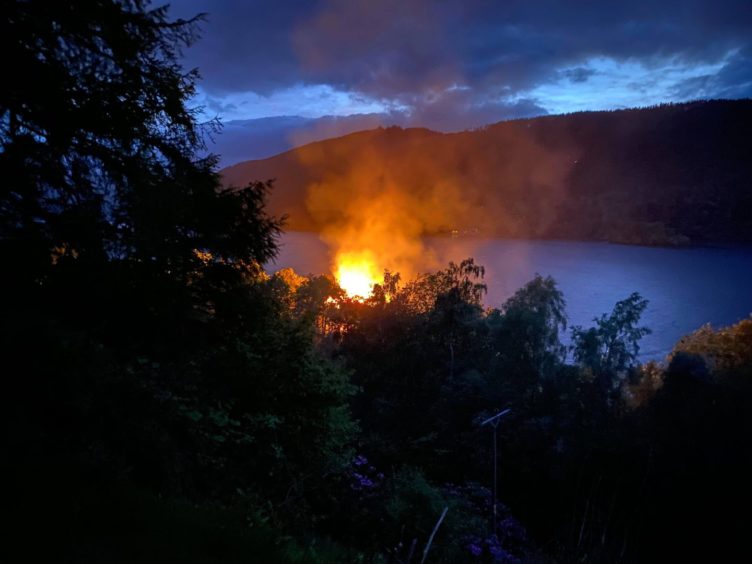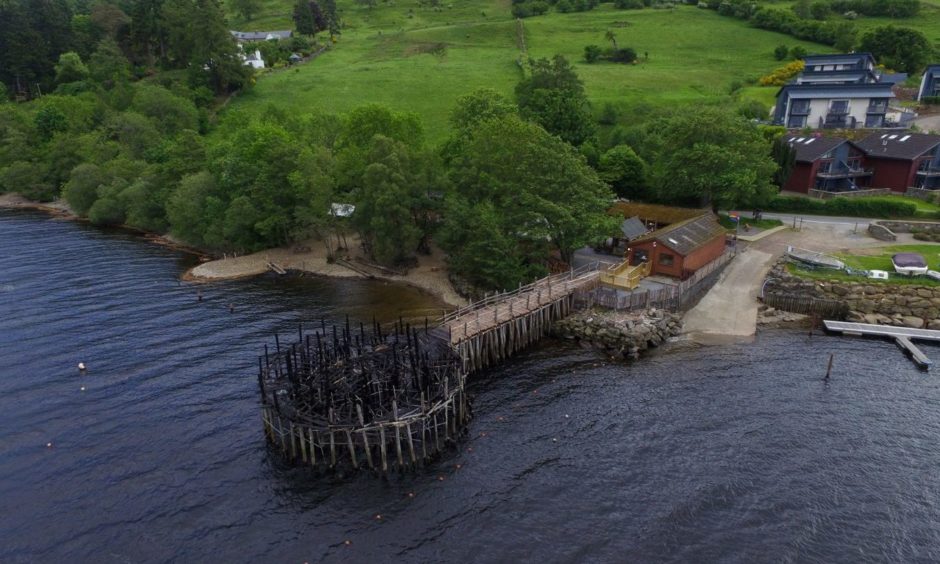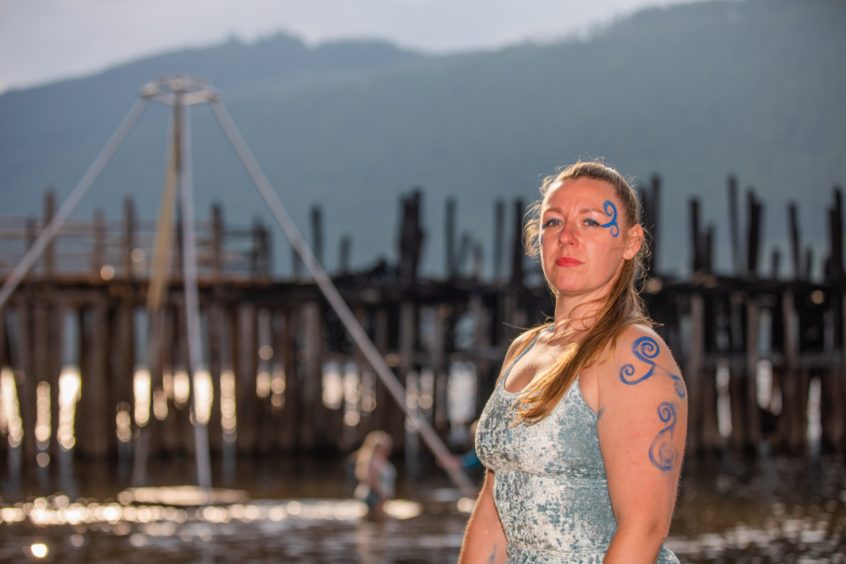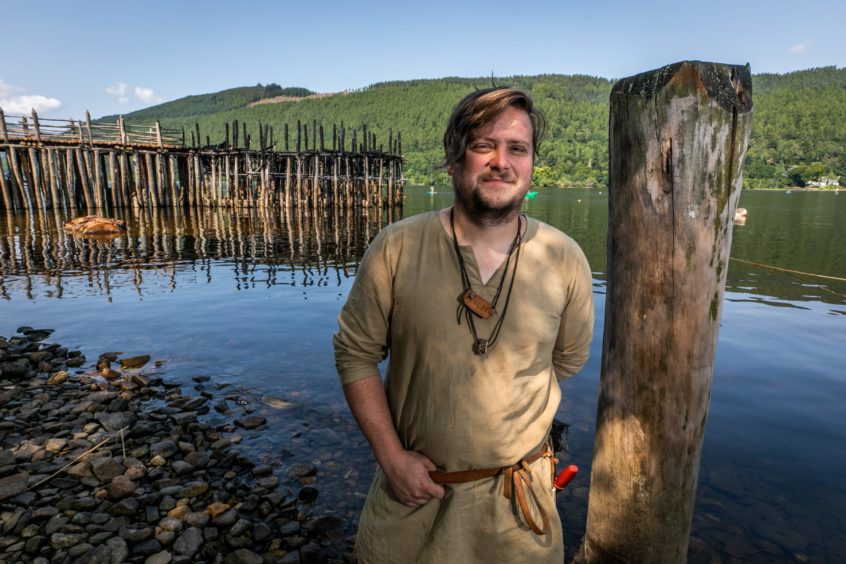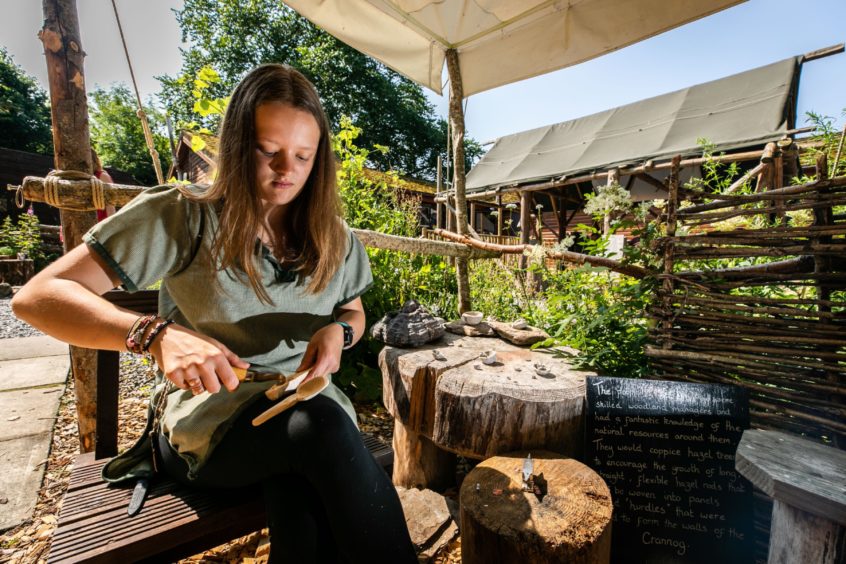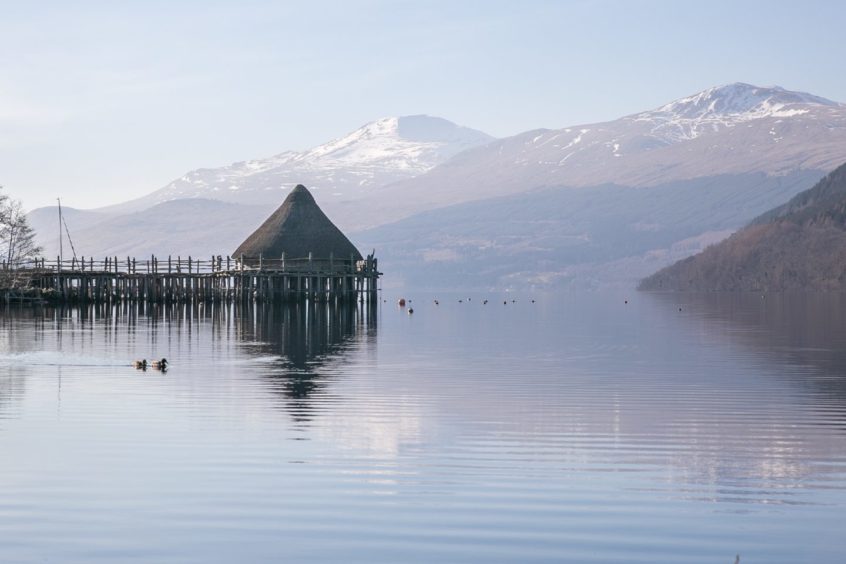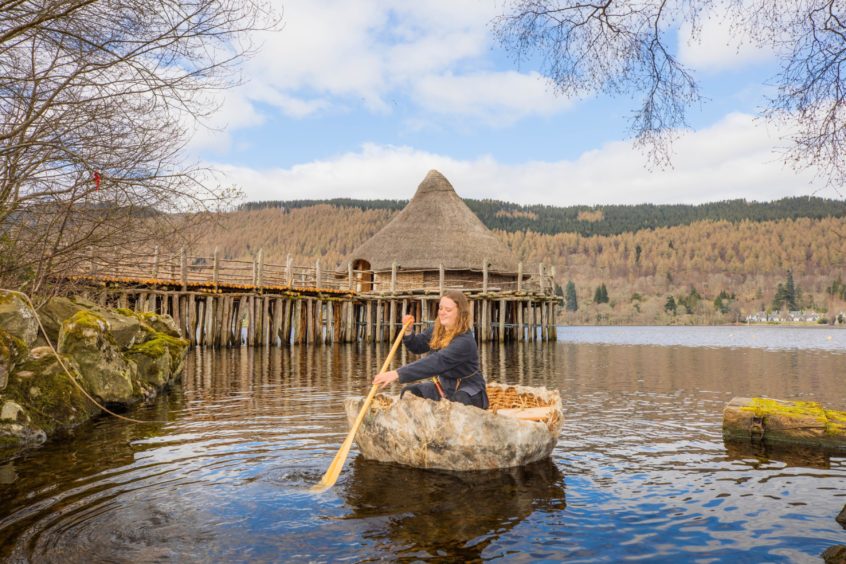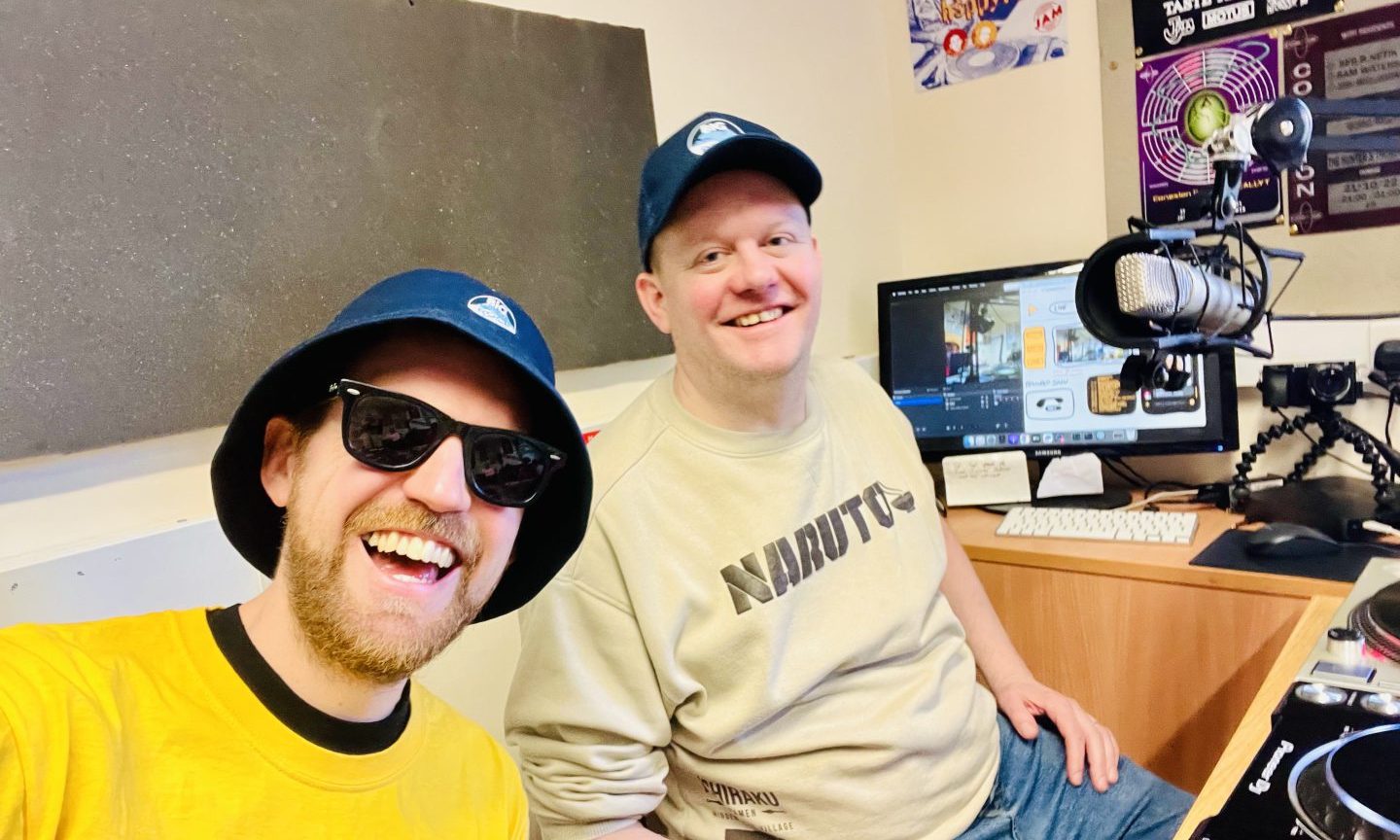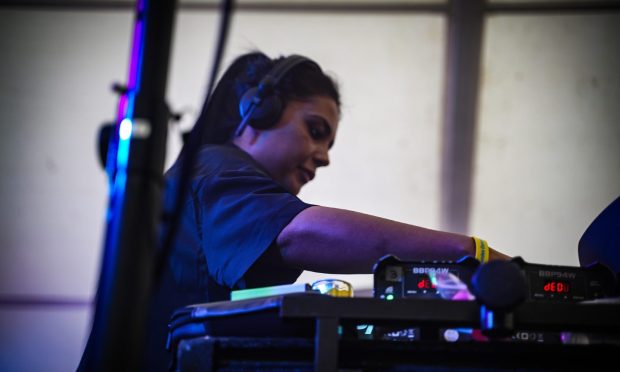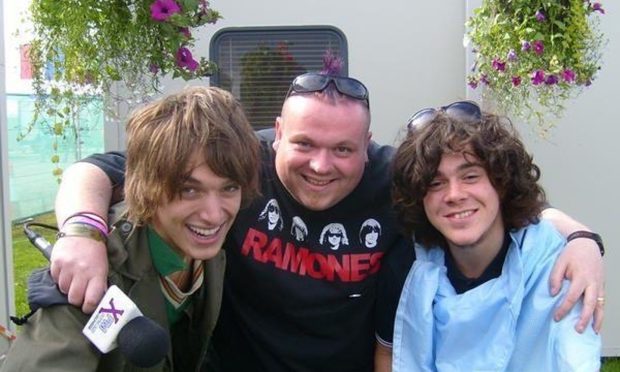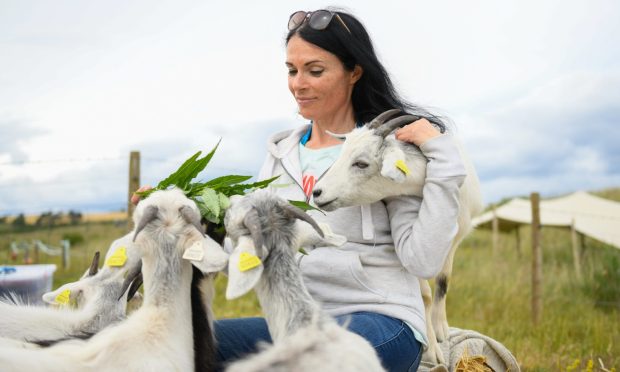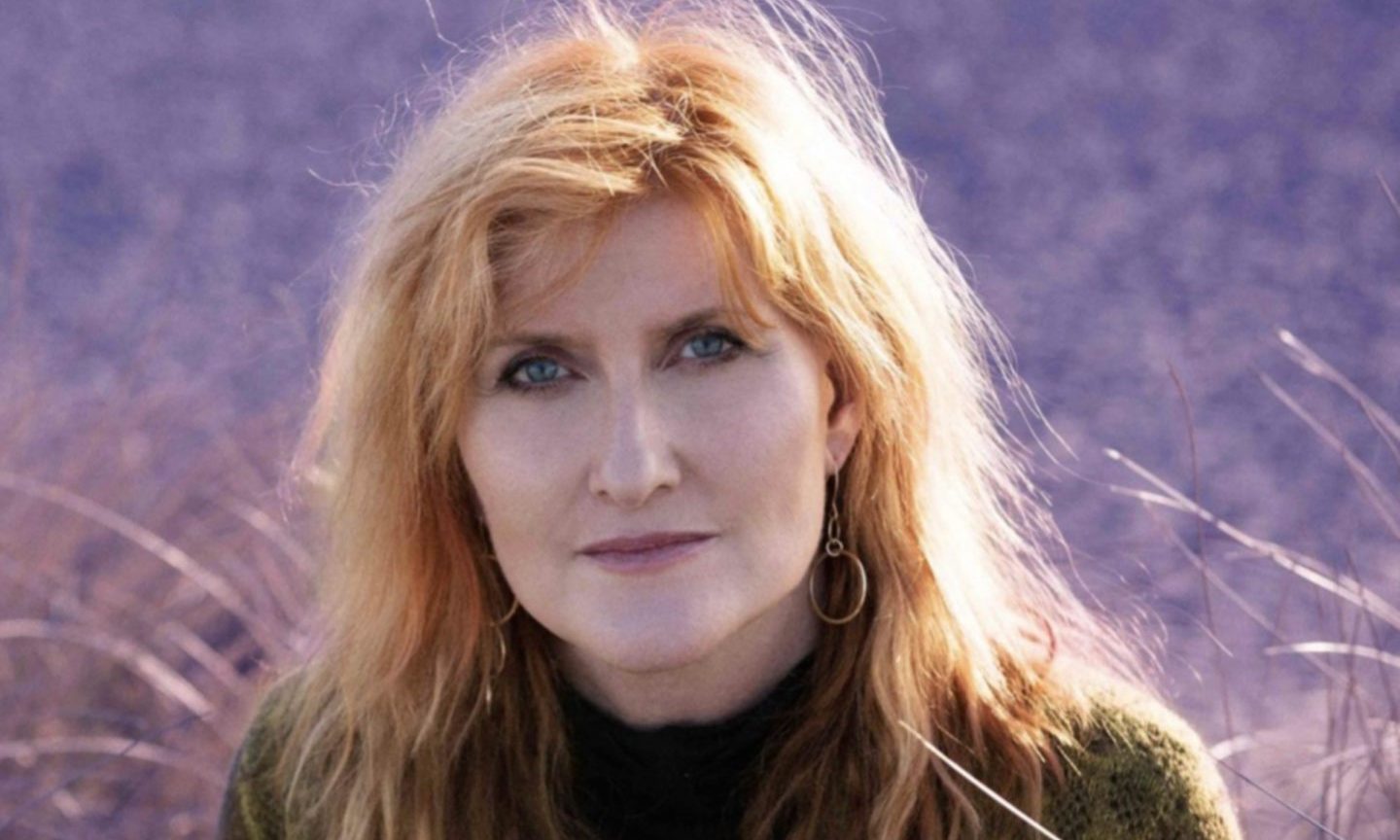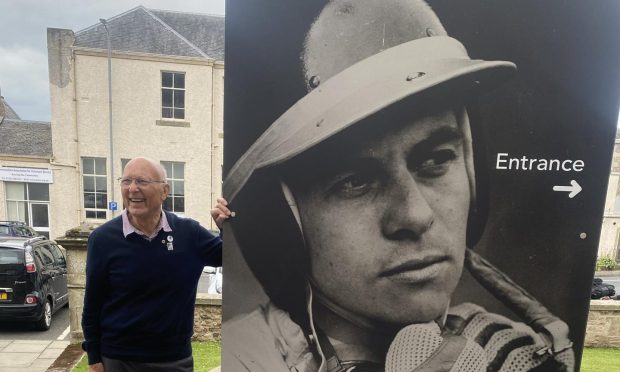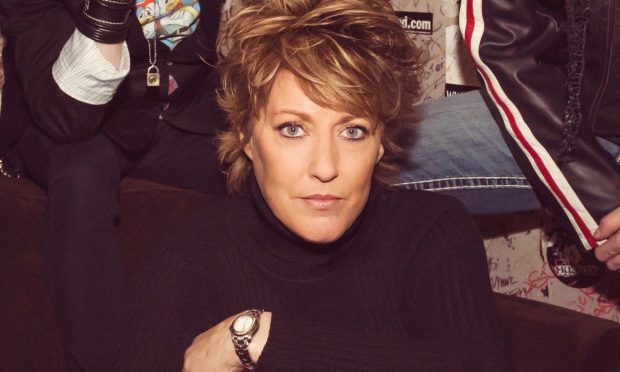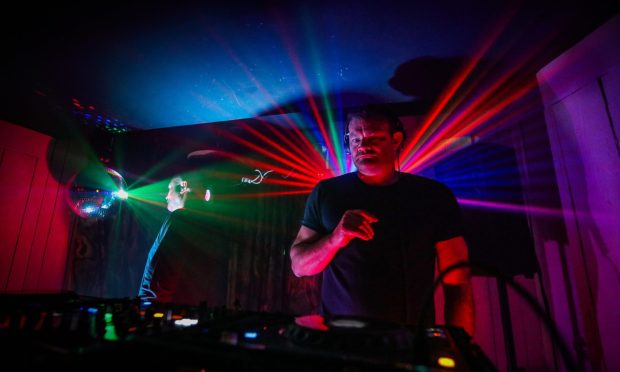A much-loved icon was lost when fire ripped through the Scottish Crannog Centre last month. However, the future is looking bright for the living history museum on Loch Tay, discovers Gayle Ritchie.
The midsummer sky was a nightmarish contrast of black and orange.
Thick, acrid smoke billowed into the air as flames engulfed the Scottish Crannog Centre.
Locals watched in horror and disbelief as the inferno devastated the centre’s most iconic feature – a reconstructed Iron Age dwelling that had stood on Loch Tay’s shore for 25 years.
“It was gone in six minutes,” lamented centre director Mike Benson as he spoke to media beside the smouldering wreckage later that evening.
“You can’t think of Loch Tay without thinking about the Iron Age roundhouse. It’s a much-loved icon and what’s happened is just so incredibly sad.”
When I headed to the centre six weeks after the fire, it was with a sense of dread.
My last sighting of it, in May, was from a boat. I was on a “crannog cruise” around Loch Tay and along with fellow passengers, I was blown away by the beauty and uniqueness of the stilted, thatched structure.
This time, however, I’m greeted by the charred remains.
Stacks of burned, blackened timber are piled high, a sad reminder of what would have been the roof, walls and supporting beams, while the remains of the foundations and floor of the crannog are cordoned off.
It’s a sad and shocking sight to behold, but things could have been much worse had it not been for the rapid actions of fire crews who stopped the fire from spreading.
Thankfully, nothing of great historic value was lost. The museum’s collection of artefacts, some from around 2,500 years ago, remains intact, as does the mock prehistoric village on the shore, visitor centre and shop.
The blaze may have destroyed the venue’s centrepiece attraction – the “symbol” of the Scottish Crannog Centre – but it’s not the end of the road. Far from it.
“This is a new beginning,” says Mike when we catch up for a chat in the centre’s outdoor snack bar, his cute Schipperke, a small black Belgian breed of dog, sitting at his feet
“We’ve had our tears and now it’s about looking to the future. The fire is part of the story, not the end of the story.
“People who lived in crannogs 2,500 years ago would’ve had fires and had a cry about it and moved on. We need to do the same. The symbol might be missing but it’s not the end.
“We just really hope people will come and back us now.”
Touchingly, there are plans to use some of the charred, salvaged timber to create an artwork that pays tribute to the fire-ravaged crannog.
“It’s very much a phoenix rising from the ashes kind of story,” reflects Mike.
“An artwork made from the charred remains would act as a memorial to the old crannog and be a symbol of resilience.”
Positive vibes
The centre’s prehistoric village is in full swing when I visit with workshops on everything from stone drilling and dyeing wool to spoon carving and making bread. There’s even a fun game called “bat the rat”, which I can’t quite get my head around.
I chat to education officer and archaeologist Lucy Traynor in the “medieval kitchen” as she’s making nettle tea and am treated to a lyre recital and puppet show from Will Kent.
I also meet some of the centre’s young apprentices, who started here in August as part of a pilot scheme.
Everyone is smiling; nobody wants to dwell on what has been lost.
Positivity is the name of the game. And no wonder. There’s a lot to look forward to.
Planning was already well underway for an ambitious £12.5 million redevelopment of the centre on the north side of Loch Tay at Dalerb when the blaze took hold.
The plan includes three crannogs (reconstructions of stilted loch dwellings), a living history museum, an Iron Age village, woodman’s yard, artists’ hub, performance spaces, café, restaurant and gift shop.
The new centre, which will boost employment from the current 20 members of staff to 56 and offer “social housing” for craftspeople, aims to be the most sustainable museum in Scotland.
And while the current centre will continue to “deliver the magic”, the hope is that the plans to open the new one can be fast-tracked.
Operations manager and community archaeologist Rich Hiden is hugely optimistic about the future.
“It sounds like a cliché but it really will rise from the ashes!” he beams.
“The CCTV shows there were no suspicious circumstances around the fire – there was no malicious intent. It was just a terrible accident. We can’t change what’s happened so we’ve decided we’ve got to move on and focus on building something bigger and better.”
And while the loss of a 25-year-old icon evokes a degree of emotion, Rich is fully aware that ultimately, what was lost was a replica crannog.
What’s important is that the museum’s collection of Iron Age artefacts, which were excavated from the Iron Age site of Oakbank Crannog in 1980 and were stored in another building, were not damaged by the fire.
“It sounds like a cliché but it really will rise from the ashes!”
Rich Hiden
People can still come and see artefacts that were used 2,500 years ago, including a scrap of twill, a type of spelt and a butter dish from 500BC with remains on butter on it.
Other artefacts, some of which can be seen at the Crannog Centre, such as a foot plough, wooden utensils, a whistle, animal bones, fruit, nuts, and plant remains offer evidence of a farming lifestyle.
“Yes, the fire has happened but fires would’ve happened and crannogs would’ve collapsed or burned down thousands of years ago,” reasons Rich.
“This gives us the opportunity to talk about that – to talk about what to do with a burned-out crannog. There’s an archaeological value in that. It gives us an insight.
“The plan always was to build a new national museum at Dalerb by 2025 and the fire has given us the jet fuel to push on and speed up the process.
“Right now, we’re without a crannog at the Crannog Centre but it seems labour-insensitive to build a new one here when we’ve got big plans across the water on a new site. We’re forging ahead but we need to work closely with bodies of support and we need more funding. There are a lot of balls in the air.”
When it launches (and dates have yet to be confirmed), the new museum will, in Rich’s mind, be the yin to V&A Dundee’s yang.
“At one end of the Tay there’s V&A Dundee, a modern museum, while at the other end, at the source of the Tay, we’ll have Scotland’s most sustainable museum, in touch with prehistory and in touch with our roots,” he muses.
“We have the same bold ambition and vision as the V&A but we believe we’ll be able to offer a greater sense of place and belonging.
“We’ll give a lot back to the community. It’s a chance to expand what we’ve got.”
Devastating blaze
Positivity flows through Rich; he’s excited about the Crannog Centre’s future.
But he admits it’s taken him a while to come to terms with the disaster.
His experience on the night of the fire was mixed with horror and sadness.
“I got a call from a panicked fellow member of staff at 11.20pm on June 11, a Friday night, telling me the crannog was ablaze,” he recalls.
“I live a mile away so it was a case of shoes on, jump in the car and speed down the road. I could see the fire lighting up the sky half a mile away. The flames were huge.
“The fire crew were already there. They’d come incredibly quickly, and thank goodness. They did a phenomenal job containing it. We could’ve lost everything.”
Several weeks on, Rich still finds it devastating to look at the remains of the crannog but he’s determined to focus on the positives – that nobody was hurt and that the historic collection remains.
“I’ve tried to paint what’s happened out of my mind, to an extent,” he frowns.
“The crannog is just not there anymore – that’s my focus.
“I want to get away from the fact there’s just a burned-out husk in its place.
“But what’s happened can’t be ignored and on tours, I’ll always make a point of talking to visitors openly about it. It’s about telling a slightly different story. A story that talks about how you deal with the loss of a crannog.
“Opportunity is a horrible word to use but we do have a great opportunity now to forge ahead with the new museum project while remembering this site and its history.
“Yes we’ve lost a Loch Tay icon and that’s hard. But what we’ve lost we can rebuilt.”
Aftermath
In the immediate aftermath of the fire, staff agreed it was important to reopen as soon as possible. They pulled out all the stops to get the centre back up and running within five days.
“Our job is to connect people with stories of the past,” says Rich. “So we opened as quickly as we could and ran a Midsummer Music event as a fundraiser that week.
“People came to support us from across Scotland and craftspeople helped us run the event by giving up their time for free.
“This outpouring of support from the community has been amazing. We’ve been inundated with well-wishers and those keen to help with fundraising. It’s really helped boost our spirits.
“The message we want to get out there now is that we are open and people should come and visit!”
Celts are Coming
Rich is hugely enthusiastic about the Crannog Centre’s biggest event yet, Celts are Coming, which brings together craftspeople, artists, archaeologists and musicians from all over the country to celebrate Scotland’s prehistory.
It’s taking place right now and runs until August 2. There’s everything from leatherworking to stone carving, woodworking, weaving, music and much more, with gorgeous handmade activities available to buy.
Meanwhile, there are plans for other fundraising events including Crannog Craic on August 26 and music sessions every Thursday.
The centre has also launched a financial appeal to help cover the associated costs of the fire with apprentices planning to take part in sponsored activities as part of the campaign.
An online fundraising page has already raised more than £81,000, which Mike says is “humbling”, and offers of labour, material and expertise have been flooding in.
History
In 1979, a survey was made of crannogs on Loch Tay, with the Iron Age site of Oakbank Crannog, off the village of Fearnan, being selected for pioneering underwater investigation.
Excavation revealed well-preserved 2,500-year-old structural timbers, domestic utensils, remains of food and textiles.
These fantastic finds inspired the project to build the dedicated Scottish Crannog Centre, on the opposite side of the loch near Kenmore.
The centre was built between 1994 and 1997, opening to the public in 1997.
The focal point of the centre, the crannog reconstruction, was built by The Scottish Trust for Underwater Archaeology.
It was created to promote the research, recording, preservation and interpretation of Scotland’s underwater heritage.
Crannog craic
It’s hard to imagine that hundreds of people once lived on Loch Tay, inhabiting ancient manmade islands known as crannogs.
There are thought to be 18 on the loch and while most are submerged, there are a few which can still be seen, appearing as tree-covered islands.
Many crannogs were built in the water as defensive homesteads and represented symbols of power and wealth.
Once abandoned, the structure would eventually rot away and keel over, crumbling down on top of all the debris that had dropped into the loch.
A combination of lack of oxygen, no light and cold water are the main reason why they have been preserved.
The earliest loch-dwelling in Scotland is some 5,000 years old but people built, modified and re-used crannogs in Scotland up until the 17th century.
Hundreds of crannogs have been found in Scotland but only a few have been investigated.
- For more details and to donate to the Scottish Crannog Centre appeal, see justgiving.com/campaign/crannog
